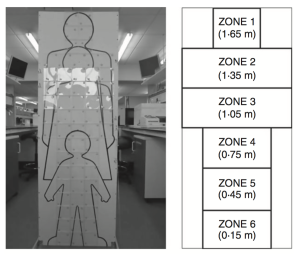![Using a Dyson hand dryer is like setting off a viral bomb in a bathroom [Updated]](https://cdn.arstechnica.net/wp-content/uploads/2016/04/2741928471_1b22b245ee_z-640x480.jpg)
Bathrooms are a prime location for smearing disease-causing microbes all over your hands. Yet, despite societal pressures and prodding signage, a lot of people don’t clean their grimy mitts after a potty break. Some audacious folks just skip the sink all together, while others don’t wash for long enough (experts recommend singing “Happy Birthday” twice in your head) or omit the cleansing soap step. All of those sanitation-slackers threaten to spread disease—particularly in healthcare settings packed with vulnerable patients. But what the latter groups do to dry off their un-cleaned hands may end up setting off a germ bomb.
Researchers have long known that warm air hand dryers can launch bacteria into the air—compared to dabbing with paper towels, which unleashes virtually none. But new jet air dryers, made by Dyson, are significantly more problematic—they launch far more viruses into the air, which linger for longer periods of time and reach much farther distances, researchers recently reported in the Journal of Applied Microbiology. This is particularly concerning because viruses, unlike many infectious bacteria, can easily maintain their infectiousness in the air and on surfaces, and just a few viral particles can spark an infection.
“The results of this study suggest that in locations where hygiene and cross-infection considerations are paramount, such as healthcare settings and the food industry, the choice of hand-drying method should be considered carefully,” the authors concluded.
For the study, the authors, Patrick Kimmitt and Keith Redway of the University of Westminster, compared the viral explosions from paper towels, a standard warm hand dryer, and a Dyson Airblade jet dryer. The researchers had two participants slather their gloved hands with a virus called MS2, which infects only bacteria but is a model for the spread of non-enveloped human viruses, such as norovirus. The resulting viral coating was in the realm of the amount of virus shed in the feces of people infected with severe stomach bugs, such as norovirus and rotavirus, and the amount of viral particles that might stick to dirty paws, the authors argue.
Next the participants dried their hands with one of the three methods, while the researchers took air samples and captured viruses on plates set up at various places in the bathroom. The plates, 90mm-diameter agar dishes, contained a thin layer of E. coli, which MS2 infects and kills. If a virus landed on the plate, it would decimate the bacteria at the spot leaving a dead patch, called a plaque. So, to count viral landings, the researchers simply waited a bit and counted the plaques.

Researchers set up plates at six heights right next to the drying sources—from adult head height to the leg height of small children. They also set plates at nine places around the bathroom, from zero to three meters.
By far, the jet dryer was the biggest viral spreader in all measurements.
Clumping the data from all six heights together, the Dyson produced 60 times more plaques than the warm air dryer and 1,300 times more than paper towels. Of the viruses launched by the jet dryer, 70 percent were at the height of a small child’s face.
Looking across the distances tested, most of the jet dryer-launched viruses landed about 0.25 meters away. But at three meters, the number of plaque-forming viruses spread by the jet dryer was 500-fold greater than that from the warm air dryer (paper towels launched zero to this distance). In total across the distances, the jet dryer spread 20 times more viruses than the warm dryer and more than 190 times more than the paper towels.
With the air sampling data, the researchers looked at how long viruses lingered in the air after the drying methods were used. Fifteen minutes after a jet dryer blast, there were 50 times more viral particles in the air than after a warm air dryer and 100 times more than after paper towel use. The data also suggested that the jet dryer-launched viruses would float beyond the 15 minutes.
Update (4/19/16): In a response to Ars, Dyson accused the authors of scare mongering with the study. “It has been conducted under artificial conditions, using unrealistically high levels of virus contamination on unwashed, gloved hands,” the statement read. The company also pointed to four studies suggesting that the Dyson Airblade hand dryers are hygienic.
However, none of those studies looked at viral aerosols or the effects of using the Airblade to dry unclean hands, as would inevitably happen in real life usage. Instead, the studies focused on whether the hand dryer added germs to already cleaned hands, if the dryer itself harbored more infectious microbes than the rest of a bathroom, and the amount of aerosolized bacteria after drying clean hands.
Still, there is indeed little data on how many viruses are generally on the hands of healthy and sick people after a trip to the can. Researchers will need to conduct more studies to figure that out—as well as whether the relatively high blast-rate of viruses from jet dryers, such as Dyson’s, pose an increased absolute risk of infections to bathroom visitors.
Journal of Applied Microbiology, 2016. DOI: 10.1111/jam.13014 (About DOIs).
reader comments
311